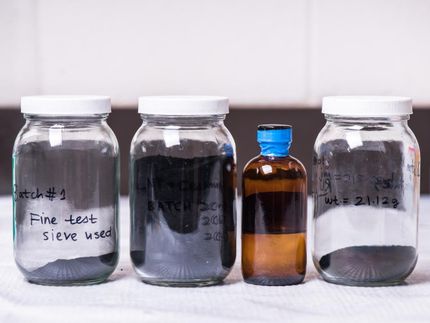More effective than vitamin E: a new class of antioxidants
Advertisement
Fat goes rancid over time if no antioxidants are added. Our bodies also contain fat molecules, called lipids. They are essential for our cell membranes. These too must be protected from excessive peroxidation; left unchecked, it can cause atherosclerosis or various autoimmune and neurodegenerative diseases, such as Alzheimer's disease, to set in. Nature's most important weapon in defense of lipid Peroxidation is vitamin E (alpha-tocopherol). An international team of researchers working with Derek A. Pratt (Vanderbilt University, USA) has now developed a new class of antioxidants that are up to 100 times more effective than vitamin E.
The trouble with the peroxidation of lipids is that it is a chain reaction. In the first step, an oxygen radical -- a molecule with an unpaired electron on an oxygen atom, removes a hydrogen atom from a lipid. This leaves behind a lipid radical, which has an unpaired electron on a carbon atom, which reacts with an oxygen molecule to form a lipid peroxyl radical. This is an oxygen radical that can then attack another lipid in turn -- in order to steal a hydrogen atom -- resulting in yet another lipid radical.The vicious circle starts all over again and is difficult to stop. This is where antioxidants like alpha-tocopherol come into the picture; they intercept the lipid peroxyl radicals. Radical scavengers like tocopherol are phenols, they consist of a six-membered aromatic carbon ring with an attached oxygen atom, and this oxygen atom carries a hydrogen atom (an OH group). This hydrogen atom is stripped away by the peroxyl radical. In contrast to the lipid radicals, the resulting phenolic radical is relatively unreactive, and the chain reaction stops. In order to find an even better radical interceptor, the chemists searched for a phenolic compound, whose OH group gives up its hydrogen atom more easily than vitamin E. However, most of these super radical scavengers are much to readily attacked by oxygen in the air to be useful.
Computer simulations enabled Pratt and his co-workers to develop a new class of air-stable phenolic antioxidants. Subsequent experiments have demonstrated that two of these amino pyridinol compounds, as they are called, are particularly effective radical scavengers. They consist of a phenol ring, in which one of the carbon atoms has been replaced with a nitrogen atom. This aromatic (containing three double bonds) ring is fused with another, aliphatic (containing only single bonds) carbon ring, which also contains a nitrogen atom. "These amino pyridinols are, to the best of our knowledge, the fastest peroxyl-radical-trapping antioxidants ever reported," says Pratt.
Most read news
Other news from the department science
These products might interest you

Anopore™ by Cytiva
Precise filtration made easy with Anopore inorganic membranes
The aluminum oxide filter membrane that can increase the purity or yield of your analyte

Hahnemühle LifeScience Catalogue Industry & Laboratory by Hahnemühle
Wide variety of Filter Papers for all Laboratory and Industrial Applications
Filtration Solutions in the Life Sciences, Chemical and Pharmaceutical Sectors

Get the chemical industry in your inbox
By submitting this form you agree that LUMITOS AG will send you the newsletter(s) selected above by email. Your data will not be passed on to third parties. Your data will be stored and processed in accordance with our data protection regulations. LUMITOS may contact you by email for the purpose of advertising or market and opinion surveys. You can revoke your consent at any time without giving reasons to LUMITOS AG, Ernst-Augustin-Str. 2, 12489 Berlin, Germany or by e-mail at revoke@lumitos.com with effect for the future. In addition, each email contains a link to unsubscribe from the corresponding newsletter.





























































